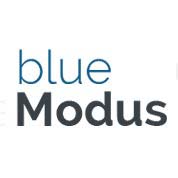
If you've ever been to a kickoff meeting, you know it can set a tone for the entire project. A chaotic or disorganized beginning, in which team members don't clearly understand their roles and everyone leaves with a different understanding of the schedule does not bode well. Conversely, a well-structured, organized initial kickoff meeting can lay the groundwork for project success.
Want to get a great start on your next project? Here are a few tips and tricks that I use in kick off meetings that have proven highly effective over the years.
1. BEFORE YOU BEGIN: DEFINE THE FUNDAMENTALS.
Don't forget to do your homework! Documenting the fundamentals before your kickoff meeting will result in a solid understanding of the project, including the necessary team members and plan required to complete it. Always prepare the following information prior to kickoff:
- Define the general goal or purpose of the project.
This can often be as easy as just cutting and pasting the project overview section from a signed contract. - Review the project scope.
This should include all the deliverables, tasks or services from the signed contract. - Create a team roster.
Include in the roster each person’s title, email address and phone number. - Review the project timeline.
Even if a detailed timeline cannot be provided, a high-level time line provides some sort of structure to get the team focused.
Ready for the kick off now? Here are some ways a project manager can enhance the kick off meeting itself.
2. CLEARLY DEFINE AND DOCUMENT ROLES.
Each person’s role as it pertains to this specific project should be defined and documented. Include bullet points under each team member, listing their responsibilities for the project. This is also great place to interleave some of the project’s assumptions and risks.
3. MAKE THE PROJECT DATES CRYSTAL CLEAR.
Beyond the project schedule, you should also define the start and end date separately using heading format. This way, the start and end dates are shown in the table of contents, which makes finding basic information very easy for all involved.
4. DIVE DEEPER INTO POTENTIAL CALENDAR CONCERNS.
Don't let planned absences and closures throw off your schedule down the road. Within the project start and end date, document the known upcoming planned vacation days of all stakeholders and team members. Also, remember that not every company recognizes the same holiday schedule (particularly when working with international teams.) Be sure you list out all the national holidays or office closures for both your team and the client’s team.
This extra level of proper schedule tracking provides project managers another layer for planning demonstrations, meetings, development, and review expectations. As a bonus, it also demonstrates your extraordinary planning skills to your client.
5. CLEARLY DEFINE EXPECTATIONS.
Minimize future communication issues by defining expectations about your team's process to the client. The most common expectation I like to set is that all email communications will have the project manager courtesy copied. I share with clients the reasoning behind cc’ing the PM is because developers often do not monitor their email as frequently as project managers do, (e.g. they could be out sick, or the client may have forgotten that they are on vacation.) This process allows me to always provide the expedient feedback that the client needs.
6. CONFIRM THE CHANGE MANAGEMENT PLAN.
Review the change management plan and determine who, from the client’s team is authorized to approve changes. I often say that anyone can request a change but there is only one person that I will go to for approval.
7. THE BEST TIP OF ALL: ASK THE CLIENT HOW THEY DETERMINE PROJECT SUCCESS.
Whatever feedback the client provides, be sure that their definition of success can be measured. Knowing this information at kickoff, this should allow you to keep success measures at the forefront of the project. Then, when the project is completed, remind the client how success was defined and provide the results.
Adjourn the kickoff, as you would any meeting, by reviewing next steps and any action items as a result.
The kick off meeting is important for more reasons than just documentation. We have many mechanical tools and templates at our disposal and we should always use them, but remember it is also an opportunity for the client and the development team to first meet one another.
The tone and purpose of the kickoff sets the foundation for the entire project, so take the time to define and review how this team will work together effectively. When your project succeeds, you will be happy you did.









